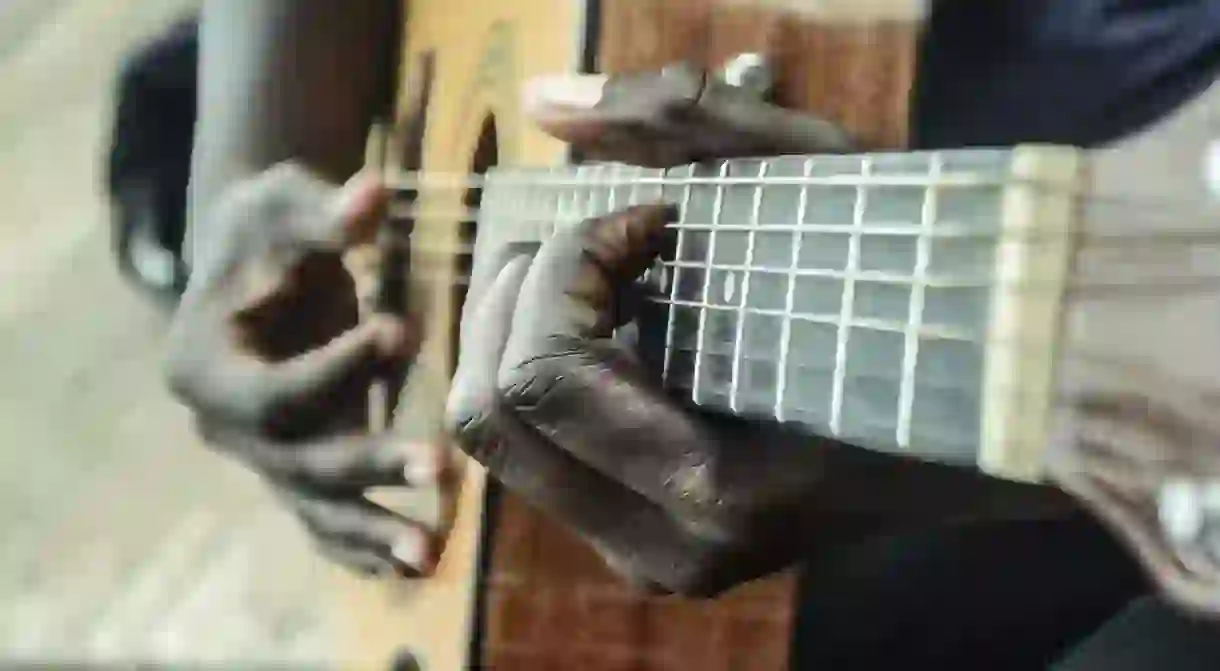An Introduction to Afro-Peruvian Beats in 10 Songs

Many associate Peruvian music with the soothing melodies of Andean folkloric tunes. However, there is another lesser-known, yet remarkable style within the country’s musical heritage. The Afro-Peruvian genre came about during the colonial era as a result of the large scale importation of African slaves. Although the Spanish were successful in repressing the music, a 1950s revival saw it promulgate into the mainstream.
“Toro Mata” by Caitro Soto
Meaning “The Bull Kills,” this powerful political song laments how the Spanish, represented by the bulls, massacred countless slaves in their quest to control the continent. It has become something of a Peruvian anthem in recent decades, with most great Afro-Peruvian artists having done their own rendition of the tune. Caitro Soto’s 1973 version is considered by many to be the best.
“Danza de las lavanderas” by Perú Negro
Perhaps the most important band within the genre, Perú Negro was formed in the late ’60s by a group of friends determined to promote their cultural roots. The supergroup has collaborated with a number of Afro-Peruvian stars over the years, becoming so influential in the scene that the government declared them the Cultural Ambassadors of Black Peru. “Danza de las lavanderas” (or Dance of the laundry ladies) pays homage to the hardworking yet beautiful black women of Peru through both music and dance.
“Son de los Diablos” by Perú Negro
After more than 40 years, Perú Negro are still going strong and currently have some 30 members in their global touring troupe. Internationally recognized and the winner of multiple Grammy awards, it’s difficult to underestimate the group’s impact on Afro-Peruvian music. Another of their most celebrated songs is “Son de los Diablos,” an instrumental track with syncopated beats accompanied by a vigorous dancing devil.
“No Me Cumben” by Nicomedes Santa Cruz
One of the original Afro-Peruvian decimeros, Nicomedes Santa Cruz was instrumental in bringing the revival into the mainstream. But it wasn’t an easy road for Santa Cruz, working as a blacksmith, poet, and theater composer before discovering his talent and passion for the genre in the late ’50s. “No Me Cumben” is an excellent example of his characteristic poetic style as well as his groundbreaking fusion of Latin and African melodies.
“Samba Malato” by Lucila Campos
Landing her first singing gig aged just nine in the late ’40s, Lucila Campos went on to perform with numerous highly regarded Afro-Peruvian groups, including Perú Negro, before embarking on a solo career of her own. Her sound is a mix of Afro-Peruvian, criolla and tropical influences, which shine through in her 1995 hit “Samba Malato.”
“Maria Lando” by Susana Baca
Teacher, professor, historian, folklorist, Grammy award winner, and even the former Minister of Culture, Susana Baca is kind of a big deal. Some might recognize her booming, emotionally charged voice from the chorus of Calle 13’s “Latinoamérica,” although fans of Afro-Peruvian are more likely to appreciate her contribution to the genre through a mix of traditional instruments and contemporary style. Her 2001 cover of “Maria Lando,” which depicts the hardships of slavery under the Spanish, brought the singer to international stardom.
“Atajo de Negritos” by Amador Ballumbrosio
Dubbed the godfather of Afro-Peruvian music, Amador Ballumbrosio worked tirelessly to promote his cultural traditions during the early days of the revival. His most notable achievement was popularizing the dying music and dance of the Atajo de Negritos ceremony. Hailing from the Afro community of El Carmen, south of Lima, the lively ceremony is held on December 24 each year in honor of baby Jesus.
“Azucar de Caña” by Eva Ayllón
An enduring Afro-Peruvian legend, Eva Ayllón has been honing her voice since she was three years old. Later, during a series of school singing competitions, she blew away her audience and proved to everyone present she was destined for greatness. Sure enough, after leading numerous successful bands, she eventually moved to the United States to promote the genre overseas. Her song “Azucar de Cana” is about a small indigenous settlement that transformed into a sugar cane plantation during colonial rule.
“Landó” by Chabuca Granda
The only white performer on our list, María Isabel Granda Larco, a.k.a. Chabuca Granda, began singing at a catholic girls’ school in an affluent Lima suburb where she was originally trained as a soprano—her trademark deep voice occurred after an operation. It wasn’t until much later in her career that she began experimenting with Afro-Peruvian sounds by reinterpreting the waltz into the genre. “Landó” is the perfect example of this fusion.
“Contigo Perú” by Zambo Cavero
Over a career spanning several decades, Arturo “Zambo” Cavero became a national hero for his eclectic mix of creole and traditional waltz sounds. Although not strictly part of the Afro-Peruvian genre, he was an inspiring member of the community who was so beloved that the president declared a national day of mourning upon his death in 2009. His powerful, patriotic tune “Contigo Peru” is considered the country’s second national anthem, a song that he is rumored to have performed in the dressing room of the Peruvian national team to inspire them to victory before a 1982 World Cup qualifier.
Like what you hear? Compilation album The Soul of Black Peru is an excellent introduction to the genre, featuring hit songs by many of its best artists.













